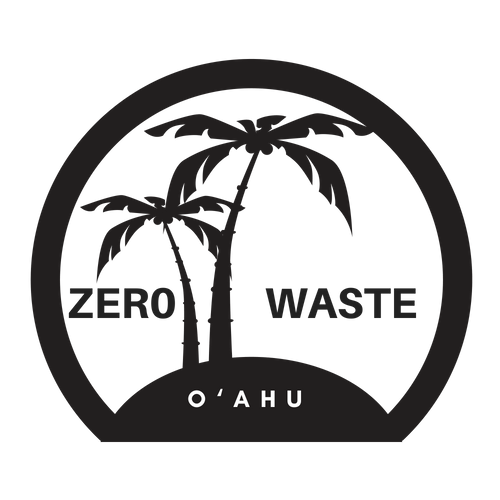What we like (with caveats)
What we like (for the most part, with some caveats):
Commitment to reducing solid waste per capita by 25% by 2030 (letʻs try for 0%!)
Reducing plastic going to H-POWER to reduce GHG emissions from H-POWER (but only by 1%....we can do better than that!!).
The Source Reduction Working Group (and we wonder how the group feedback be incorporated into our waste management strategy? What are the outcomes, timelines, etc.).
Major Issues and missed opportunities
Food Waste/Composting: Currently there is no residential food waste mitigation or policy and only large businesses must divert food waste from H-POWER in Honolulu. This means massive amounts of food waste are being burned at H-POWER from small restaurants/stores/businesses and residents. This plan does not seek to change that. We have 12 years to change our GHG emissions rate to alleviate the global climate crisis--food waste management is one of the most cited and effective methods for doing that.
We need: 1) municipal food waste composting, or 2) financial support from C&C (along with permitting support from the State DOH) to pursue localized, community composting solutions, and 3) The City to expand the food waste ban (Chapter 9, Section 9-3.5 of the Revised Ordinances of Honolulu) to include residents and small businesses.
Education: If education is the cornerstone of the waste reduction plan, there needs to be a dedicated staff person. Right now the plan does not account for that and is non-committal about hiring an education specialist (stating the City will “plan to investigate the feasibility” of hiring someone). Can the revenue from H-POWER energy sales be used to pay for an education specialist position? We also suggest following Maui Countyʻs lead to provide small grants to community partners that are already doing waste reduction education in lieu of the C&C behalf.
Tourist tax: We ask the plan consider a county tourist tax of $1.00 per visitor to support holistic island waste management that can handle the massive impact of visitor industry waste stream on our local waste systems and to support the visitor industry in prioritizing waste reduction.
Burning Recyclables: Burning recyclables is a band-aid for the core issues that we produce too much stuff that must be throw away. This plan explores burning recyclables at H-POWER as a solution to the currently weak recycling market. If the City is committed to waste reduction, the then aggressively pursue policy that will reduce single-use items for recycling or burning. If the City is willing to renegotiate recycling state policies to allow for burning (currently the State of Hawaiʻi does not allow the counties to burn recyclables), can the City instead direct that energy to working on source reduction policies (like single-use water bottle reduction or creating a safe environment for consumers to reuse containers at eateries)?
H-POWER: We do not want a fourth boiler, so let’s not plan for it! Instead, let’s plan to make less trash and renegotiate the H-POWER so we do not have to deliver 800,000 tons of trash each year.
H-POWER ash: before committing to the "beneficial reuse of ash" demonstrate that this material safe to use (i.e. what happens to the heavy metals, dioxins, PCBs that infuse the ash?).
Glass: Consider local glass reuse and washing along with the more intensive glass crushing.
BYO container & DOH: If the City is committed to waste reduction, collaboration with DOH to modernize BYO container policy will be necessary. Since the City and County has stated willingness in the plan to pursue reform of other state policy, we suggest the City work on this issue directly.
Source Reduction Working Group: can an outcome of this group be to create a Zero Waste Plan that the City will commit to follow? There needs to be student and community member seats on this committee.
